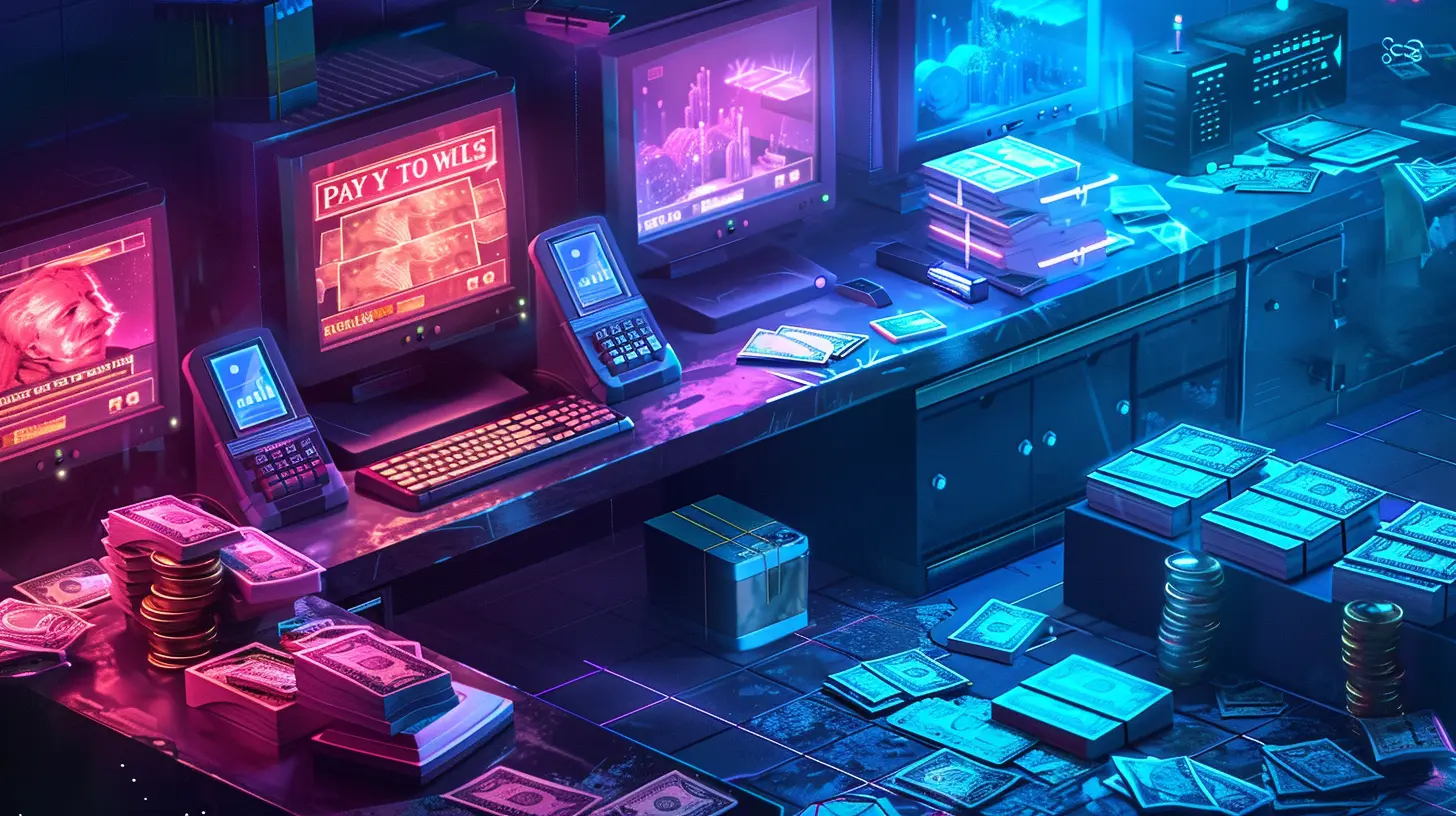How Developers Design Games to Encourage Spending
18 November 2025
Gaming has changed a lot over the past couple of decades. Gone are the days when you'd pop in a cartridge, play for a few hours, and call it a day. Now? Games are built to keep you coming back…and spending. If you've ever caught yourself wondering how a "free-to-play" game somehow got you to drop $20, you're not alone.
So, what’s the secret sauce? How do game developers design games to encourage spending without pushing players away? Buckle up—because we're diving deep into the psychology, mechanics, and behind-the-scenes strategies that drive in-game purchases.
The Rise of Free-to-Play and In-App Purchases
Let’s start with a quick look at the landscape. Free-to-play (F2P) games dominate mobile platforms and are creeping into PC and console spaces too. Think Fortnite, Apex Legends, Candy Crush, and Clash of Clans. They don’t cost a dime upfront—but somehow, they’re raking in billions.Here’s the trick: these games rely on microtransactions. That is, you’re not buying the game, but you’re very likely to spend inside it. Whether it's new skins, extra lives, or bonus content, developers have fine-tuned their games to make you want to spend.
Why Encouraging Spending Isn’t Just About Profit
Sure, developers want to make money—who doesn’t? But encouraging spending isn’t just about stuffing wallets. It’s about sustaining the game. A well-earning game can afford more updates, better servers, and cooler content drops. Plus, it funds the salaries of everyone behind the scenes. But to get there, developers need to be smart about how they design the entire experience.Let’s peek behind the curtain.
Psychological Triggers: Tapping Into Human Behavior
1. The Power of Scarcity
Ever seen a pop-up that says, “Limited Time Offer!” or “Only 3 Left!”? That’s scarcity in action. When something feels rare, our brains go, “I need this now.” Developers use this all the time—limited-time skins, time-sensitive bundles, or exclusive event items.Scarcity creates urgency. And urgency makes wallets open fast.
2. Fear of Missing Out (FOMO)
This close cousin of scarcity is everywhere. Events that last just a few days, rewards that won’t come back, seasons that expire... all of these play on FOMO. You don’t want to be the only person in your squad without that cool new battle pass outfit, right?It’s like being the kid who didn’t get a Tamagotchi in the ’90s—you’re just left out.
3. The Sunk Cost Fallacy
Have you ever spent hours on a game and then thought, “Well, I’ve already put this much time in. Why not spend $5 more?” That’s the sunk cost fallacy, and developers know it well.The longer you’ve played a game, the more likely you are to spend on it. You’re emotionally invested—even if the purchase won’t actually make you happier in the long run.
Gameplay Design That Nudges You Toward Spending
1. Progress Walls and Grind Mechanics
Ever reach a level that seems impossible without better gear or extra lives? That’s not always by accident. Games are often designed to get harder around the point where most players might consider spending.You can grind through—sure—but it takes time. And time, as they say, is money.
By creating difficult but beatable challenges, developers push you toward choosing between hours of work or a few bucks.
2. Dual Currencies
Many games use two types of in-game currency: one you earn slowly (gold, coins, etc.) and another you buy with real cash (gems, diamonds, whatever sparkly name you want). This setup is clever.By splitting currency, spending becomes abstract. You’re not spending real money—you’re spending "crystals." It softens the psychological blow and makes it easier to part with cash.
3. Loot Boxes and Gacha Mechanics
Loot boxes are like scratch cards for gamers. You spend currency, open a box, and hope for something cool. Sometimes you win... often, you don’t.Gacha systems (common in many Asian games) work the same way. You’re incentivized to keep trying—because what if the next box has that ultra-rare item?
It’s dopamine on a string. And it’s addictive.
Social and Competitive Pressure
1. Leaderboards and Status Symbols
Let’s be honest—nobody buys a flashy skin just for themselves. It’s for the squad, the community, the flex. Games like to show off what you own. Some will even make non-paying players envy those who spend.Leaderboards take it further. Want to rank higher? Spend on better gear. Want to attract attention? Flash a fancy title. It’s digital peacocking—and it works.
2. Gifting and Clan Contributions
Games with clans or guilds often allow gifting. You contribute, you help your team, you earn respect. But here’s the thing: contributing often requires spending.That peer pressure? It’s not just real—it’s weaponized.
Personalization and Targeted Offers
1. First-Time Buyer Perks
You’ve probably seen starter packs that offer $20 worth of items for just $0.99. It’s not a generous gift—it’s a foot in the door. Once you’ve made your first purchase, you're way more likely to make another.Psychologically, it breaks the spending barrier. After that first dip into your wallet, the second is a lot easier.
2. Personalized Discounts
Some games track how you play and what you like. You might see offers tailored to your habits. Use a specific character a lot? You’ll get offers for gear that suits them. Developers are watching—and they know how to tempt you just right.Events, Seasons, and the Beauty of FOMO
Live service games (like Fortnite or Warzone) thrive on seasons. New content drops every few weeks. Battle passes rotate. Events come and go.All of this creates a rolling wave of reasons to spend. You don’t just buy once—you keep buying to stay in the loop. Miss a season? You miss all the exclusive stuff that came with it.
It’s like a subscription... but sneakier.
Gamification of Spending
1. Daily Rewards and Spending Streaks
Log in every day and you get a reward. Spend a little, and you unlock a better chest. Hit the weekly spending goal, get a bonus item.These mechanics reward not just play, but paid engagement. It turns spending into a game itself—with goals, rewards, and satisfaction attached.
2. VIP Systems and Exclusive Access
Many games have VIP tiers. The more you spend, the higher you climb. Higher tiers get better rewards, faster progression, and exclusive access.It’s like frequent flyer miles, but for gaming. And yes, it works just as well.
Ethical Lines and Player Backlash
Now, let’s be fair—it’s not all sunshine and loot boxes.Some developers go too far, turning games into predatory cash-grabs. Kids rack up charges. Players burn out. Whole communities push back.
That’s why the best devs walk a fine line. They make spending feel optional—like a bonus, not a requirement. When done right, players feel good about supporting their favorite games. When done wrong? It can kill a game’s reputation.
Remember Diablo Immortal’s infamous backlash? Yeah. That's what happens when players feel exploited.
Tips for Spending Wisely (Because We’ve All Been There)
Okay, so now you know how the system works. But what can you do to avoid falling into the trap?Here are a few tips:
- Set a Monthly Budget: Decide in advance what you’re okay spending.
- Wait Before Buying: Impulse is the enemy. If you still want that bundle after 24 hours, maybe it’s worth it.
- Look for Value, Not Flash: Ask yourself—does this improve the experience or is it just shiny?
- Watch for Paywalls: If a game feels impossible without spending, it might not be the game for you.
Final Thoughts
Game developers aren’t evil masterminds—they’re just good at what they do. They've studied player psychology, they've honed their mechanics, and they know exactly how to make spending feel fun, exciting, and...necessary.But now you’re on to them.
Knowing how the system works puts the power back in your hands. You can choose how much you spend, when to spend, and whether a shiny sword is really worth that five bucks.
So, the next time a game flashes a “limited offer,” just remember—it’s designed that way. And now, you know exactly why.
all images in this post were generated using AI tools
Category:
Pay To Win GamesAuthor:

Audrey McGhee

